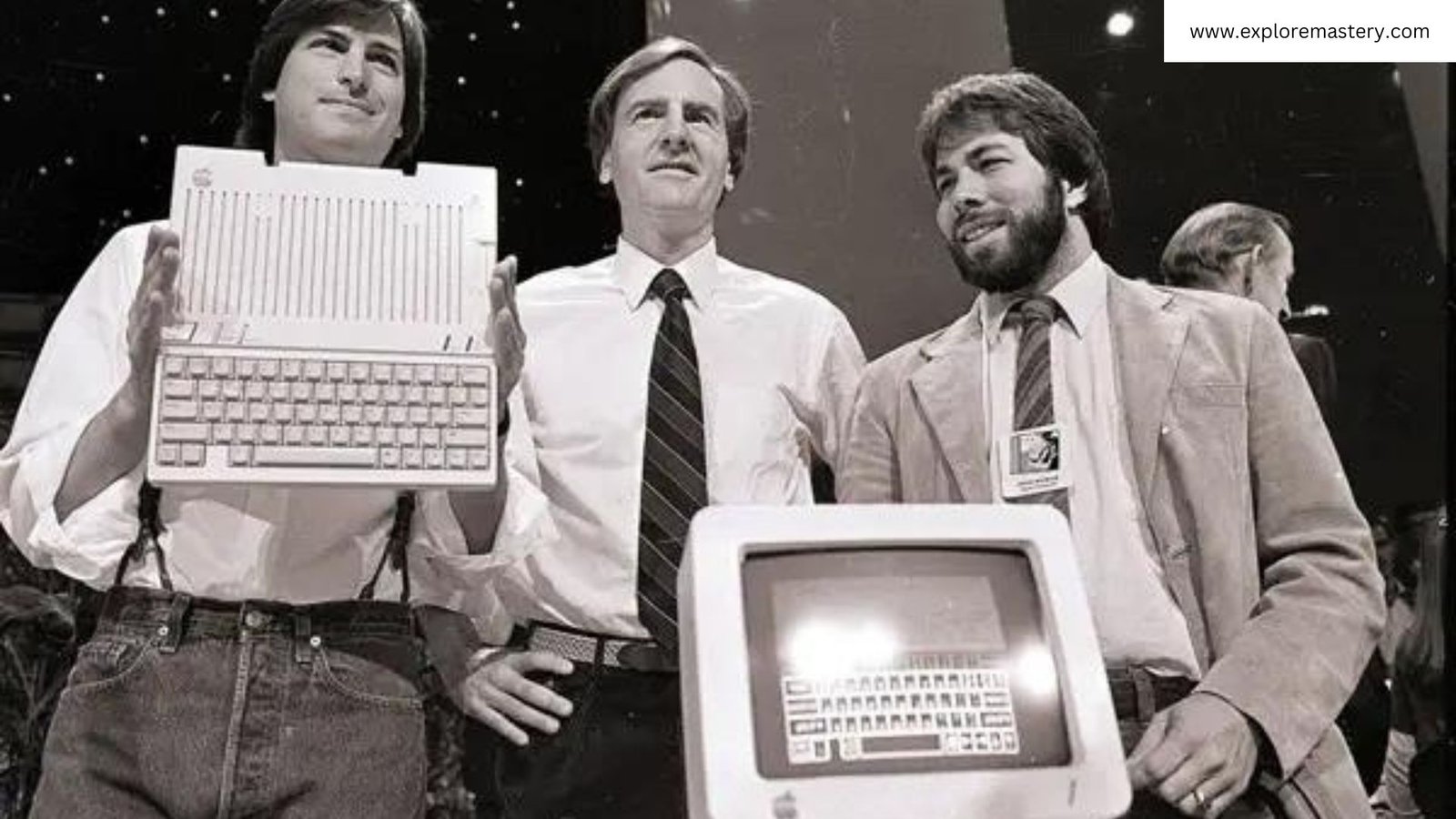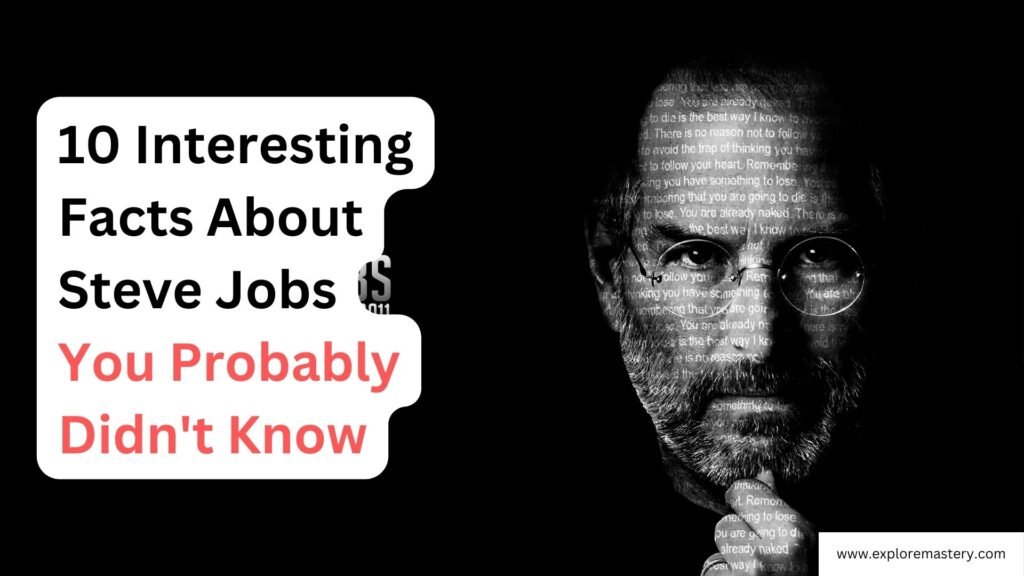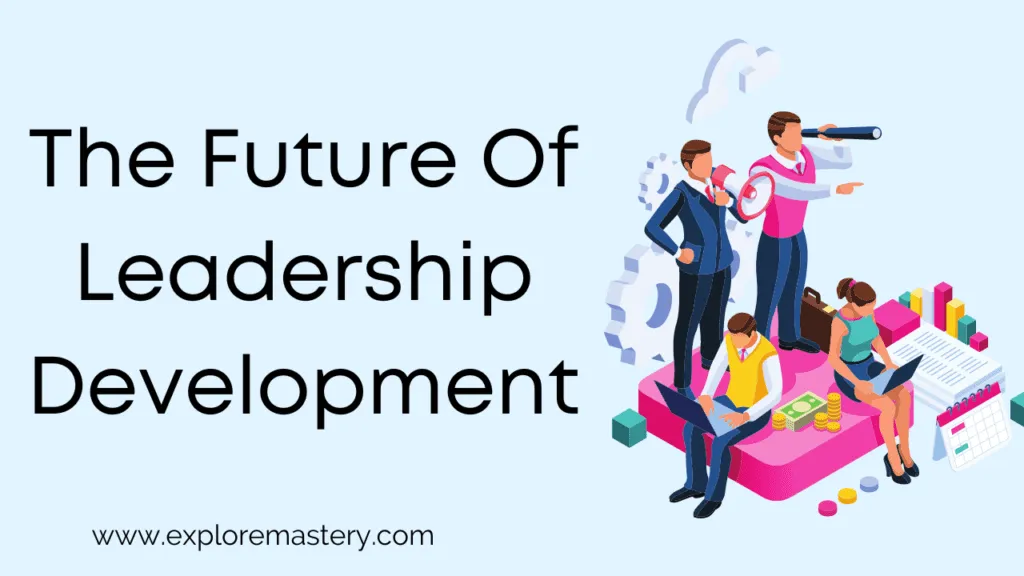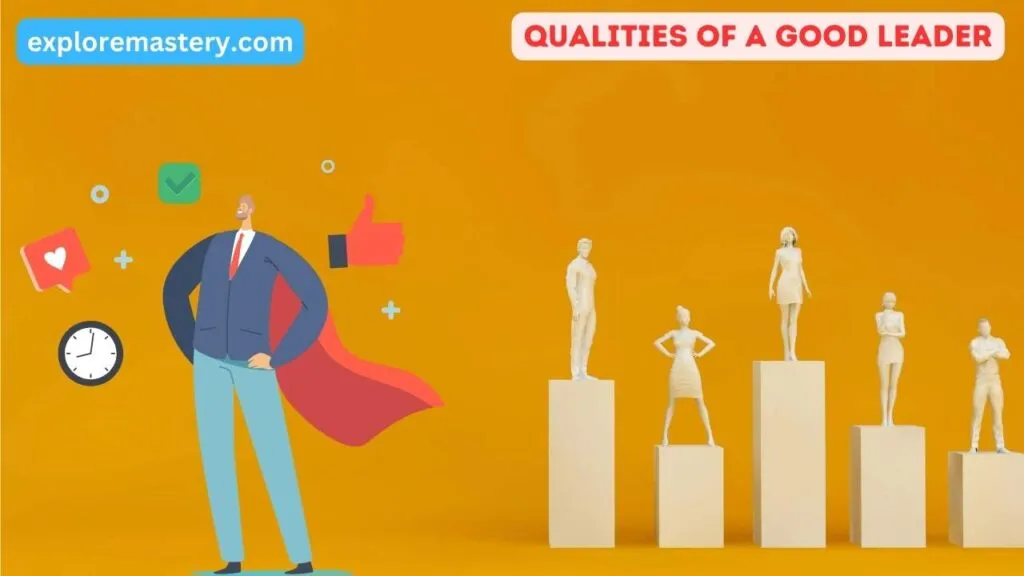Steve Jobs, the legendary co-founder of Apple, was a man of many talents and quirks. While most people know him for his groundbreaking work with the iPhone and the Mac, there are many lesser-known facts about his life that are equally fascinating. From his unique dietary choices to his unconventional management style, Jobs was anything but ordinary. Here are 10 interesting facts about Steve Jobs that you probably didn’t know.
Overview
- Steve Jobs had a strong dislike for bullet points and never used them in his presentations.
- He took a calligraphy class in college, which later influenced the type fonts used in Apple products.
- Jobs was known for his unusual dietary habits, including long periods of eating only one type of food.
- He co-created the first Apple computer in his garage, setting the stage for the tech giant we know today.
- Jobs once said, “It’s more fun to be a pirate than to join the navy,” reflecting his rebellious spirit.
Table of contents
- Overview
- 1. iPhone
- 2. Hacking Device
- 3. Calligraphy Class
- 4. Type Fonts Obsession
- 5. No Bullet Points
- 6. Dietary Choices
- 7. Management Techniques
- 8. First Apple Computer
- 9. Showers
- 10. Pirate Quote
- Conclusion
- Frequently Asked Questions
- Who was Steve Jobs?
- What was Steve Jobs’ first commercial venture?
- Did Steve Jobs ever take a calligraphy class?
- Was Steve Jobs obsessed with type fonts?
- Did Steve Jobs use bullet points in his presentations?
- What were Steve Jobs’ dietary choices?
- What was unique about Steve Jobs’ management techniques?
- Did Steve Jobs believe in taking showers?
1. iPhone
The iconic iPhone launch in 2007 was a game-changer. Steve Jobs captivated the audience by announcing three revolutionary products: a new iPod, a phone, and an internet communications device. Then, he revealed that all three were combined into one device—the iPhone. This moment is still remembered as one of the best demos in tech history.
The iPhone transformed cellphones into mini-computers, making texting and social media easy. It’s surprising to learn that the original iPhone was mainly meant to be just a phone. At the 2007 keynote, Jobs said, “We want to reinvent the phone … What’s the killer app? The killer app is making calls.”
Three years later, during the iPad launch keynote, Jobs emphasized that the new product was a “third device” between a smartphone and a laptop. This showed his vision for creating products that fit perfectly into people’s lives.
Steve Jobs’ innovative thinking, leadership style, and market strategy revolutionized the tech industry. His focus on innovation, customer experience, and perseverance set Apple apart. We can apply these principles for success by staying innovative, understanding our customers, and never giving up.
2. Hacking Device
Steve Jobs’ first commercial venture was a hacking device known as the “blue box.” Inspired by an Esquire magazine article about hackers, Jobs and his friend Steve Wozniak created their own version of the device. At the time, Wozniak was attending UC Berkeley, and Jobs was still in high school in Los Altos.
The $170 device was popular among college students who wanted to make free long-distance calls. Jobs and Wozniak sold dozens of these devices around college dorms. However, their venture came to an abrupt end when they were robbed at gunpoint while making a sale outside a pizza parlor.
It’s more fun to be a pirate than to join the navy. This famous quote by Jobs was used to motivate Apple employees while developing the first Mac in 1982. The anti-establishment outlook can be traced back to Jobs’ first business endeavor over a decade earlier.
How Can We Apply This for Success?
- Innovation and Creativity: Just like Jobs and Wozniak, think outside the box and come up with creative solutions to problems.
- Risk-Taking: Don’t be afraid to take risks. Sometimes, the biggest rewards come from the biggest risks.
- Learning from Failure: Even if your venture fails, learn from the experience and use it to improve your future endeavors.
- Teamwork: Collaborate with others who share your vision and can complement your skills.
- Stay Motivated: Keep yourself and your team motivated with inspiring quotes and a clear vision of your goals.
3. Calligraphy Class
Steve Jobs once said that the most important class he took in college was calligraphy. This class at Reed College, which he attended after dropping out, had a profound impact on him. It was here that he learned about typefaces, varying spaces between different letter combinations, and what makes great typography. This knowledge later influenced the design of the first Macintosh computer, making it the first computer with beautiful typography.
Jobs’ experience with calligraphy teaches us a few important lessons:
- Follow Your Curiosity: Jobs didn’t take the calligraphy class because he thought it would help him in his career. He took it because he was interested in it. Sometimes, following your curiosity can lead to unexpected and valuable outcomes.
- Connect the Dots: Jobs often spoke about how you can’t connect the dots looking forward; you can only connect them looking backward. The calligraphy class seemed irrelevant at the time, but it turned out to be crucial for the development of the Macintosh.
- Embrace Diverse Learning: Jobs’ calligraphy class is a reminder that learning doesn’t always have to be directly related to your career. Exploring different fields can provide unique insights and skills that can be applied in various ways.
In a world where knowledge and information are abundant, the desire to learn is scarce. Embrace every opportunity to learn something new, no matter how unrelated it may seem to your current path.
By applying these lessons, we can foster a mindset of continuous learning and curiosity, which is essential for success and beyond.
4. Type Fonts Obsession
Steve Jobs had a deep fascination with type fonts, which significantly influenced Apple’s design philosophy. His passion for typography began when he dropped into a calligraphy class in college. This seemingly small decision had a profound impact on the tech world, as it led to the introduction of diverse fonts in Apple products.
Jobs’s obsession with fonts wasn’t just about aesthetics; it was about creating a user-friendly experience. He believed that the right font could make a product more accessible and enjoyable to use. This attention to detail is a testament to his commitment to excellence.
We can apply Jobs’s focus on detail to our own projects. Whether it’s designing a website or developing a new app, paying attention to the small things can make a big difference. Here are a few ways to incorporate this mindset:
- Take the time to learn about different design elements and how they impact user experience.
- Don’t be afraid to experiment with new ideas and approaches.
- Always strive for simplicity and clarity in your work.
By embracing a meticulous approach, we can create products that not only look good but also provide a seamless user experience.
5. No Bullet Points
Steve Jobs had a unique approach to presentations: he never used bullet points. Instead, he preferred to tell stories and use visuals to keep his audience engaged. This method made his presentations more memorable and impactful.
Here are some ways we can apply this:
- Tell a Story: Instead of listing facts, weave them into a narrative. This makes the information more relatable and easier to remember.
- Use Visuals: A picture is worth a thousand words. Use images, graphs, and videos to illustrate your points.
- Keep it Simple: Focus on the key message and avoid cluttering your presentation with too much information.
By focusing on storytelling and visuals, we can make our presentations more engaging and effective.
This approach aligns with the cornerstone of effective communication skills, making it easier to connect with your audience and leave a lasting impression.
6. Dietary Choices
Steve Jobs was known for his unique dietary choices, which included a strict fruitarian diet. This diet primarily consisted of fruits, nuts, and seeds. He believed that this regimen would not only improve his health but also boost his creativity. Jobs’s dedication to this diet was one of his many fascinating quirks.
Interestingly, Jobs’s dietary habits were influenced by the book “Diet for a Small Planet” and the teachings of Arnold Ehret, who promoted a mucusless diet healing system. Jobs also experimented with pescetarianism, which includes eating fish but no other meat. Studies have shown that pescetarians have a 34% lower chance of dying from heart disease compared to regular meat-eaters.
Despite the potential health risks, Jobs’s commitment to his diet was unwavering. He even believed that it would eliminate the need for showering and enhance his overall well-being. This level of discipline and focus on simplicity was reflected in the minimalist design of Apple products.
Jobs’s dietary choices were not just about health; they were a reflection of his holistic approach to life and work. His focus on the essential, both in terms of personal health and technological innovation, is something we can all learn from.
We can apply Jobs’s principles by:
- Prioritizing simplicity and purity in our daily routines.
- Being open to experimenting with different diets to find what works best for us.
- Maintaining discipline and commitment to our chosen lifestyle.
- Understanding that our personal habits can influence our professional success.
- Embracing a holistic approach to health and well-being.
7. Management Techniques
Steve Jobs had some unusual management techniques that made him stand out. He would often walk around the office barefoot, even after Apple became a Fortune 500 company. This wasn’t just a personal choice; it was a way to break away from the traditional corporate culture and foster a more open, innovative environment.
Innovation was at the heart of Jobs’s management style. He believed in keeping things simple, both in product design and in marketing messages. This approach helped distill complex ideas into easy-to-understand concepts, making Apple products accessible to everyone.
Jobs also adopted a no ‘bozos’ policy. He believed in elevating people to management who performed at the highest levels. This ensured that only the best managers were in charge, which in turn, led to better team performance.
Another key aspect of his management was his belief that attitude reflects leadership. Jobs’s own passion and drive were infectious, inspiring his team to strive for excellence.
We can apply these lessons by:
- Encouraging a culture of Innovation.
- Keeping things simple and clear.
- Promoting only the best performers to leadership roles.
- Leading by example to inspire our teams.
By embracing these techniques, we can create a work environment that is both productive and inspiring.
8. First Apple Computer

The first Apple computer, known as the Apple I, was a groundbreaking device that set the stage for the future of Apple Inc.. Released in 1976, it was one of the first computers to use the inexpensive MOS Technology 6502 microprocessor. This pioneering machine was initially sold for $666.66, a price that seems almost unbelievable today. In 2019, a working Apple I was auctioned for nearly $500,000, showcasing its lasting value and historical significance.
Steve Jobs and Steve Wozniak, the co-founders of Apple, built the Apple I in Jobs’ garage. This humble beginning is a testament to the power of innovation and determination. The Apple I was not just a product; it was a symbol of the potential that could be unlocked with creativity and hard work.
- The Apple I was one of the first highly successful mass-produced microcomputers.
- It featured the now-familiar multi-colored Apple logo.
- The initial valuation of Apple by Jobs and Wozniak was $100,000, a figure that seemed steep at the time but proved to be a bargain in hindsight.
The story of the Apple I reminds us that great things often start from small beginnings. We can apply this lesson by embracing innovation and persistence in our own endeavors.
The journey of the Apple I is a perfect example of how taking bold steps and believing in your vision can lead to extraordinary success. Whether you’re working on a new project or starting a business, remember that every big achievement starts with a single step.
9. Showers
Steve Jobs had some unusual habits, and one of the most surprising was his approach to personal hygiene. Jobs believed that his strict vegetarian diet, which he thought was free of toxins, meant he didn’t produce body odor. Because of this, he often skipped showers and didn’t use deodorant. This belief led to some interesting situations at work. For instance, when he was at Atari, his boss assigned him to the night shift so he wouldn’t disturb his coworkers with his smell.
Another quirky habit of Jobs was his way of dealing with stress. Instead of using a stress ball or going for a workout, he would soak his feet. But not just anywhere—he would use the company toilets for this purpose. This odd practice was just one of the many ways Jobs stood out from the crowd.
Embracing unique habits can sometimes lead to innovative thinking. While not all of Jobs’ habits are advisable, his willingness to be different is a reminder that success often comes from unconventional approaches.
10. Pirate Quote
Steve Jobs once famously remarked, “It’s more fun to be a pirate than to join the navy.” This quote captures the essence of his entrepreneurial spirit and his belief in the power of innovation and non-conformity. Jobs used this saying to inspire his teams at Apple, encouraging them to think outside the box and challenge the status quo.
How Can We Apply This for Success?
- Embrace Innovation: Just like Jobs, we should always look for new and creative ways to solve problems. Don’t be afraid to take risks and try something different.
- Build Small, Agile Teams: Jobs believed that small teams could achieve great things. Focus on creating tight-knit groups that can move quickly and adapt to changes.
- Foster a Startup Mentality: Even within a large organization, maintain a sense of agility and boldness. Encourage your team to be rebellious in their thinking and approach.
Let’s channel our inner pirates and strive for innovation and creativity in everything we do.
Conclusion
So, there you have it—10 unusual things you probably didn’t know about Steve Jobs. From his quirky habits to his groundbreaking ideas, Jobs was a unique individual who left an indelible mark on the world. Whether you’re an Apple fan or just curious about the man behind the iPhone, these lesser-known facts offer a glimpse into the life of a true innovator. Thanks for joining us on this fascinating journey through Steve Jobs’ extraordinary life!
Frequently Asked Questions
Who was Steve Jobs?
Steve Jobs was the co-founder of Apple Inc. and a pioneer in the technology industry. He was known for his innovative ideas and products like the iPhone and MacBook.
What was Steve Jobs’ first commercial venture?
His first commercial venture was a hacking device called the Blue Box, which he created with Steve Wozniak.
Did Steve Jobs ever take a calligraphy class?
Yes, Steve Jobs took a calligraphy class in college, which later influenced the design of fonts on Apple computers.
Was Steve Jobs obsessed with type fonts?
Yes, he had a strong interest in type fonts, which led to the inclusion of diverse fonts in Apple products.
Did Steve Jobs use bullet points in his presentations?
No, Steve Jobs never used bullet points in his presentations. He preferred to tell a story instead.
What were Steve Jobs’ dietary choices?
Steve Jobs followed a very strict diet, often eating only one or two types of food for weeks at a time.
What was unique about Steve Jobs’ management techniques?
Steve Jobs was known for his unconventional management techniques, which included being very demanding and detail-oriented.
Did Steve Jobs believe in taking showers?
Surprisingly, Steve Jobs did not believe in taking regular showers, thinking his diet eliminated the need for them.



